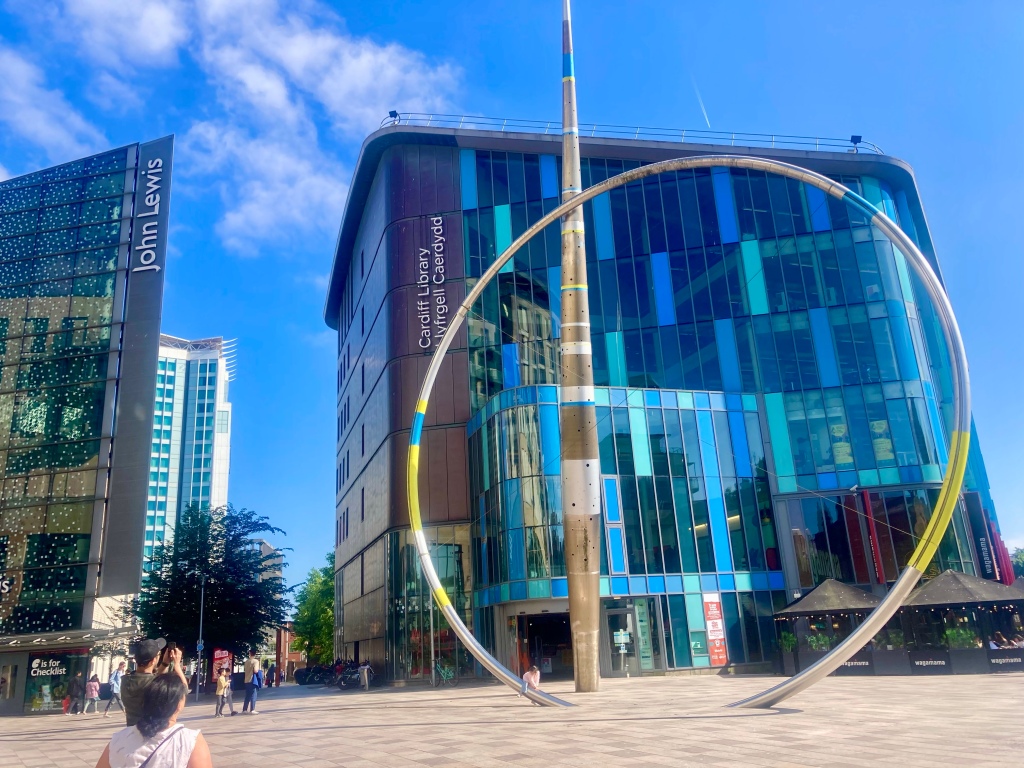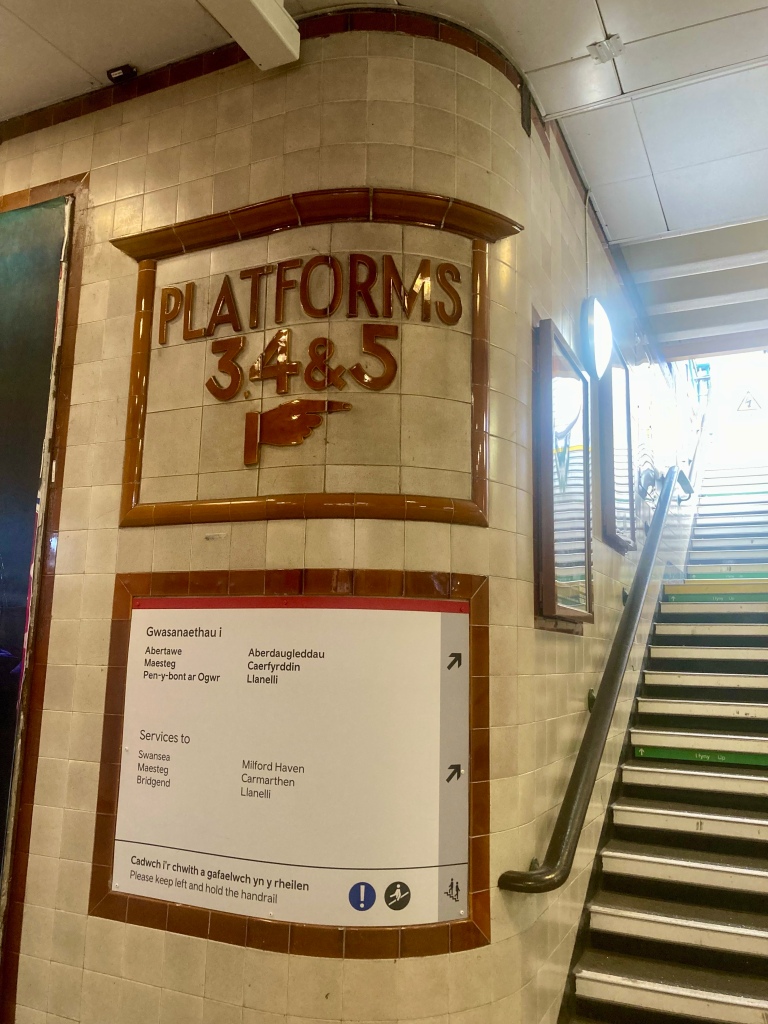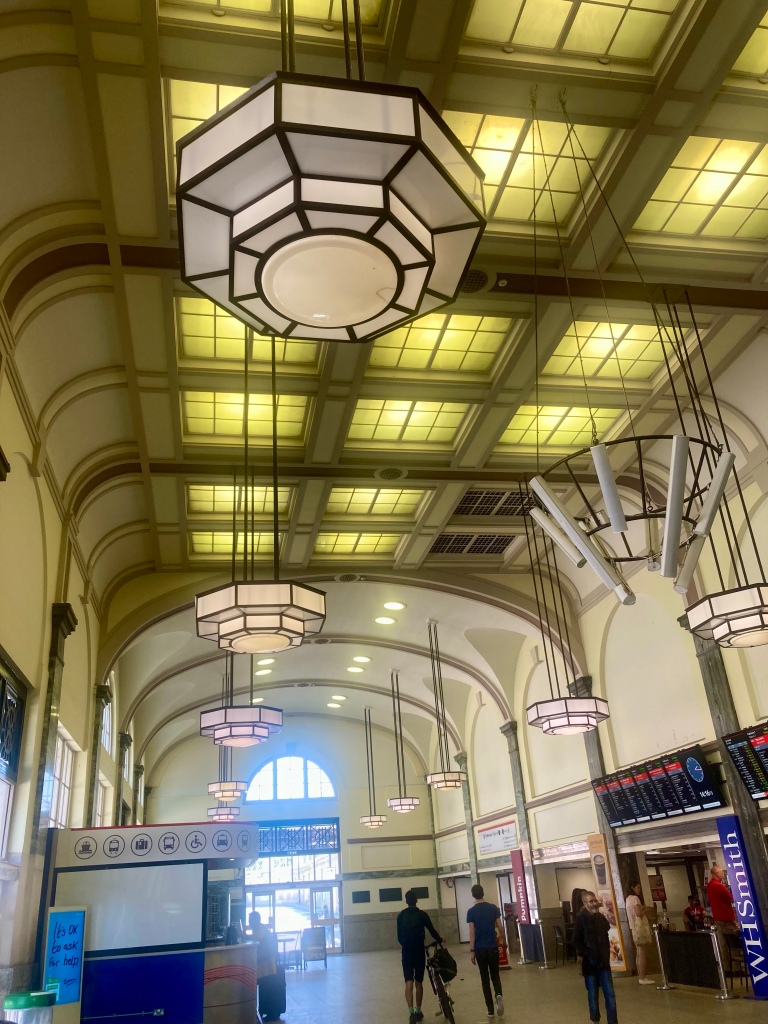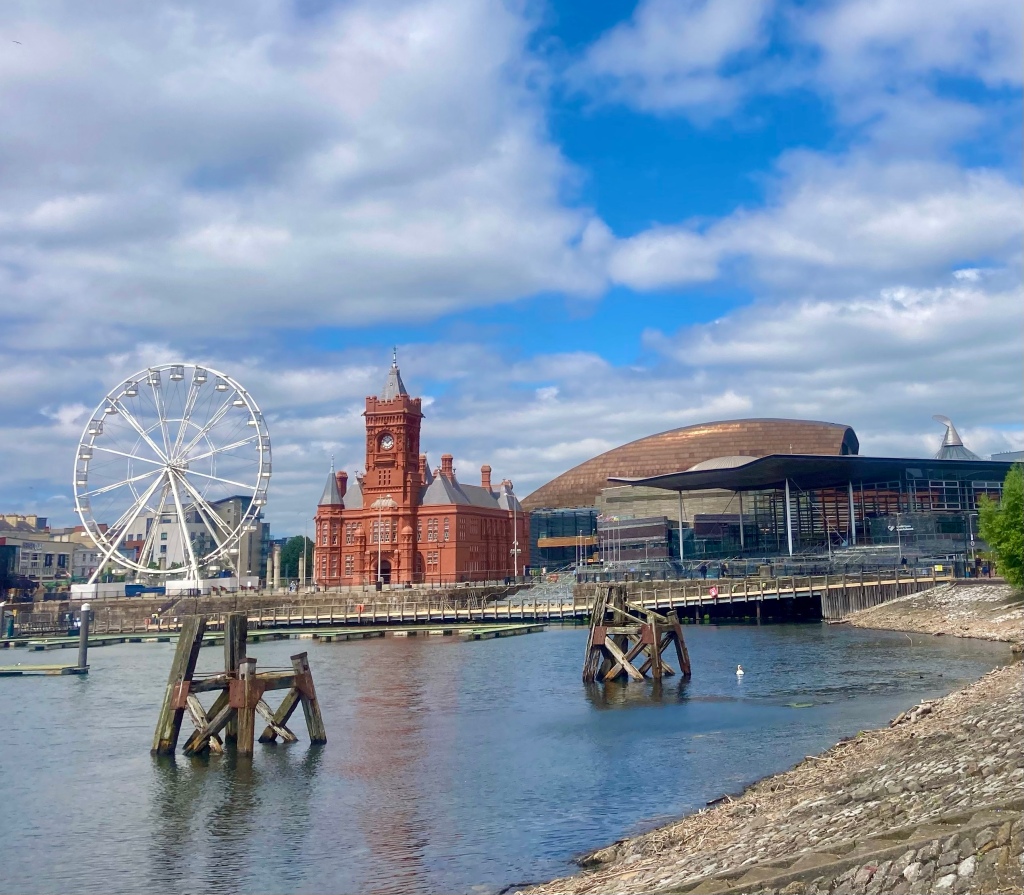
During the times when our travel was somewhat restricted by covid we realised that we had been neglecting our own country in favour of always going abroad. We enjoy city breaks, and of course the UK has some great cities, so we decided to gradually work our way around the capitals of the Home Nations, Cardiff being the last remaining unvisited.
The journey from where we live is very simple, just a train up to London and then another from Paddington, unfortunately it turned out that our return date coincided with the train drivers strike so we had to reschedule our stay (this is why I always book hotels with free cancellation where changes are easy). An unexpected bonus was that our tickets (Super off-peak returns) included free seat reservations, which I didn’t request and came in quite handy.

On arrival we were impressed with how central the main railway station was, literally opposite the BBC studios (more on those later) and a few minutes walk from the Principality Stadium, a major venue for not just sport but events such as concerts.

Our hotel was also very centrally located and had great views from the 17th floor, which I think is the highest floor we’ve ever stayed on. I’m a big fan of city views and spent quite a lot of my time when in the room just looking out the window.


The first place we visited in Cardiff was Cardiff Bay, which is about a mile from the centre. Although we walked there is also a station with frequent services from the centre (the little one carriage train shown in the photo above) and buses. We found it to be a very vibrant and lively area, which among other things is home to the cultural hub of the Millennium Centre and the Senedd, the Welsh Parliament. Visitors are welcome at the Senedd and after going through security we were able to wander around the building and sit in the public viewing gallery. There were no meetings taking place on the day we visited but we were able to listen to a guide who told us lots of facts about the Welsh government and UK government in general. It was very enjoyable and from what we could see there seemed to be a real emphasis on openness and encouraging people to be involved in the democratic process. The building itself is architecturally interesting, designed by Richard Rogers, and is built using local materials such as Welsh oak and slate, and has sustainability in mind, for example by collecting rainwater on the roof to flush toilets.




Next to the Senedd is the Pierhead Building, which shows a short film outlining the history of Cardiff docks, this is free to visit and has some nice features including tiles and mosaics.

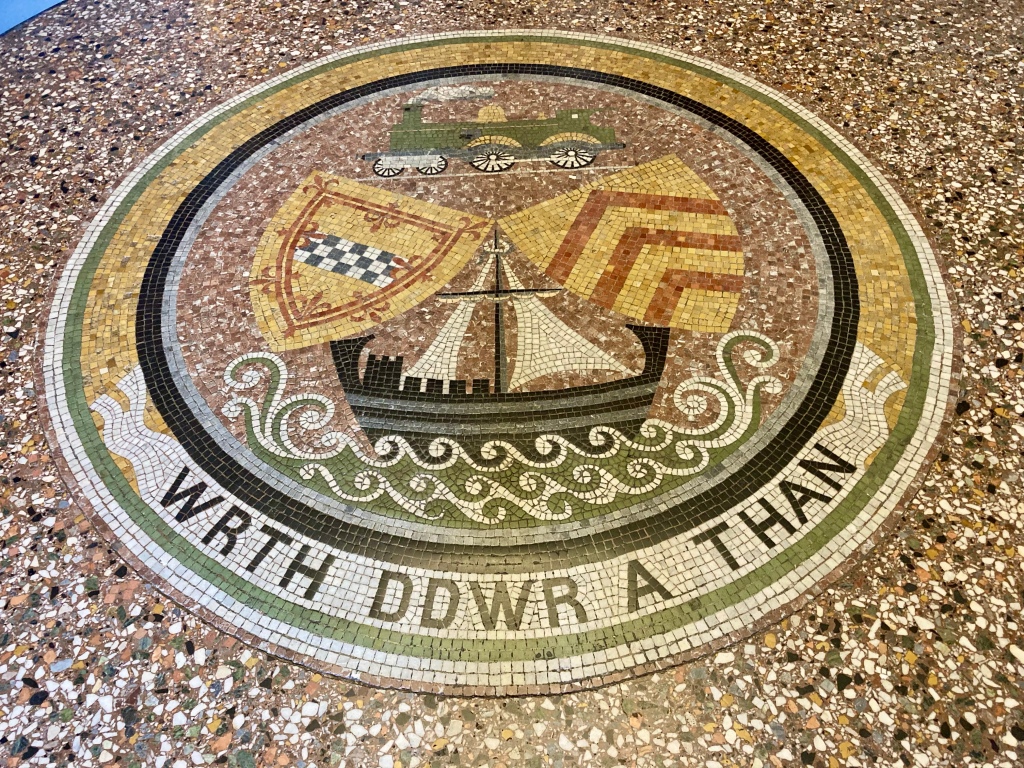
After a snack in one of the many nearby eateries we walked around the Bay heading in the direction of the Barrage and the seaside town of Penarth, although we didn’t actually get as far as either of those but the option is there for keen walkers or cyclists. We also went past the outside of Roath Lock studios where the television drama Casualty is filmed, even though we couldn’t see much it was still interesting as I’ve been watching it for decades!

Other points of interest around the Bay include a memorial to Captain Scott, who set out from Cardiff in 1910 on his voyage to the Antarctic. The Norwegian Arts Centre contains a church (originally for Norwegian sailors), exhibition and café.
On our final day in Cardiff we started off at the National Museum Cardiff. This is free to enter and has a large collection of art and natural history exhibits. I particularly enjoyed the Impressionist paintings and there is a good selection by Monet, Renoir, Pissarro and others. The museum building itself and neighbouring City Hall were both quite grand.


We finished our trip with the highlight of the holiday, a tour of the BBC Wales studios. The BBC studio tours are something that we’ve been wanting to do for a long time, and in the past there was the option to do these at Broadcasting House in London, Media City in Salford and various other locations. Unfortunately all the other tours have now stopped and so Cardiff is the only option, but given the fact that the studios there are only a few years old and some of the most advanced in the world, it was definitely worth the wait when we finally visited.
Tours have to be booked online in advance, and were around £9 each with a family ticket. We were taken to different types of TV and radio studios, and were even allowed to sit in with the person doing the announcement between programmes on BBC2 Wales. There were also opportunities to see yourself on screens reading the news and weather. I have to say that I found the whole experience extremely exciting, it was fascinating to see what happens in a live broadcasting environment and I would highly recommend this tour.



And so what about that other highlight of holidays (at least for us), the food? Well we found that Cardiff had a great selection of restaurants and cafés of all types, amongst other things we enjoyed a very nice Indian meal and some Welsh cakes (best described as a flat round cake) from a bakery that specialised in all different flavours. There is a fantastic range of shops with various shopping malls (including the second largest John Lewis in the UK) and the more traditional arcades, which offer many independent stores. We also had a walk around Cardiff Market which has a mixture of fresh produce, eateries, clothing etc.




As somebody who likes learning about different languages, one of the things I loved about Wales was the fact that all the signs etc were in both English and Welsh. I’ve been learning a few of the basics and it’s interesting to see the similarities between Welsh and some Latin languages, for example the word for thousand is “mil”. The Welsh language is related to Cornish and Breton, the latter being a language I first learned about in my teens on visits to Nantes and surrounding areas. Having other languages to decipher always makes a holiday feel more complete to me!

Obviously Wales is particularly known for its wonderful countryside and this is something we didn’t see on our little city break, but I would like to go back and explore more in the future. We found Cardiff to be a busy, multicultural and enjoyable place to spend a few days. I haven’t talked about the castle as we didn’t have time to go there, and we also missed out on a stadium tour of the Principality Stadium, so these are other options for visitors.

